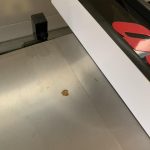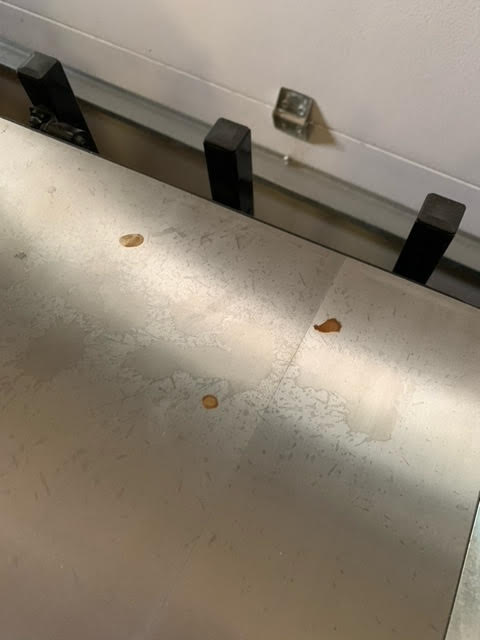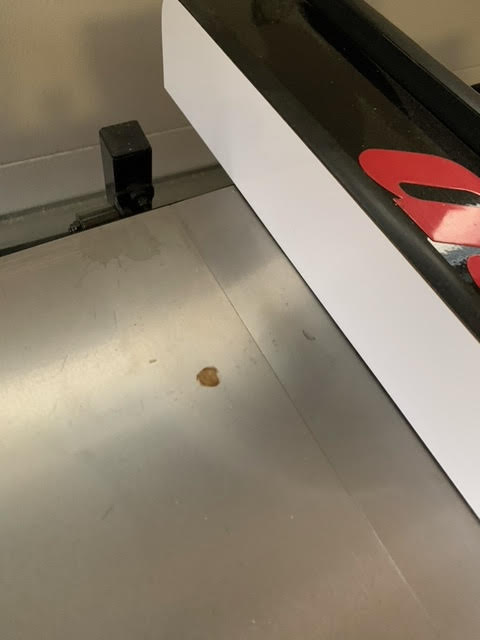
Buying a new tool is a lovely day. If you’re like me, you’ve spent hours researching and making sure you’re making the right choice. I spend hours reading forums, watching videos, and trying out demonstration examples when possible. I consummate the relationship with a handful of numbers on a piece of plastic.
Once home, I take every precaution that my new tool suffers no damage while unpacking. I cut the box open with the care used by surgeons upon making an initial incision. With the guts of the box exposed, I gingerly pull out the pieces, one by one, and lay them before me. With a scene reminiscent of an airplane crash investigation sprawled across an unused hangar, I take the manual and begin going over all of the parts. Do I have enough? How do they fit together? Do I need help with this?
Over the next several hours, I start by cleansing every part of what can best be described as Cosmoline (shipping goop). Sometimes it’s really easy (likely it isn’t Cosmoline) and other times it’s an absolute pain in the ass. However, I’ve traded a portion of my life to purchase this tool, so I am not skipping steps now. Once all parts are clean, I play a game of slow-motion Tetris. Part A goes into Part B. Part B connects to Part C… Once everything is assembled, I then spend several more hours applying coats of rust prevention product and making sure angles are what they should be.
Six months later, I start to notice something. That tool I purchased and spent so much time getting set up is starting to rust. I regularly strip and replace the rust prevention coating, so what’s going on? Unfortunately, my shop isn’t climate controlled. It’s a 2-car garage attached to my house. Temperatures jump up in the summer and sink down in the winter. In the summers, humidity is my enemy. In the winters, condensation is my enemy. In between those extremes, my own stupidity is the enemy.
For instance, it was recently raining outside, and I needed to open the garage door to move something from my car into my house. It never crossed my mind that the weather stripping on the base of the garage door would drip water on to my table saw. To my surprise, when I went to start woodworking that weekend, my table saw was covered in polka dots of rust. Even though I religiously rust protect the surface, I discovered it doesn’t matter what prevention I’ve done when it’s just too much water to evaporate before that barrier is broken.

Since my garage is not climate controlled, and I imagine a lot of us don’t have climate controlled shops, the one thing I have found really works well is a dehumidifier. If you can run a hose from it to drip outside of your shop, even better. Manually dumping the bucket becomes an every third day task for me during the summer. However, it has substantially cut down on idle rust in my shop. Idle rust is what happens when temperatures fluctuate throughout the seasons, and aren’t from a specific cause like leaving a dripping wet cold Coke can on your cast iron table.

For direct rust accidents, like that Coke can or a sweaty glove, the one thing I have learned is that it’s perfectly okay to resurface my cast iron. It won’t look as great as it did on day one when I spent so many hours setting it up, but it will function. The key here is to re-surface the entire surface as evenly as possible. Simply scrubbing out the rust with a Scotchbrite pad will only leave a divot where that Coke can sat. If it’s on the periphery of your table, and unlikely ever need to be square, fine. If it’s somewhere wood will regularly come in contact with, you’re likely better off making sure that entire surface matches what you are taking off to get rid of that rust.
Here’s where things may get frustrating, and you may ask yourself if you are helping or damaging your cast iron top. Removing rust will make your cast iron top look different. The grit of the Scotchbrite pad you used will make the top look different than when you first set it up. Most often, the clean lines will turn into what can best be described as cloudy swirls. If this really bothers you, by all means go for higher grits to bring the sexy back. However, functionally, so long as the rust is gone, and the treatment/re-finishing was consistent, it will be fine.
Finally, outside of goofy stuff like opening my garage door on a rainy day, the best way I’ve found to prevent rust build up is to clean my tools after using them. It won’t help as much as the seasons change, thus the dehumidifier recommendation, but it generally keeps the shop rust free. If you spent all night turning a bowl, wipe down your lathe with a dry cloth. If you cut some pickets out of 2×4’s from your local big box, wipe down all surfaces on your table saw when you’re done. While rust prevention options like Boeshield, Renaissance Wax, blah, blah, blah can help, ultimately, keeping your woodworking space clean will serve you much better when trying to prevent rust. That and a dehumidifier.

